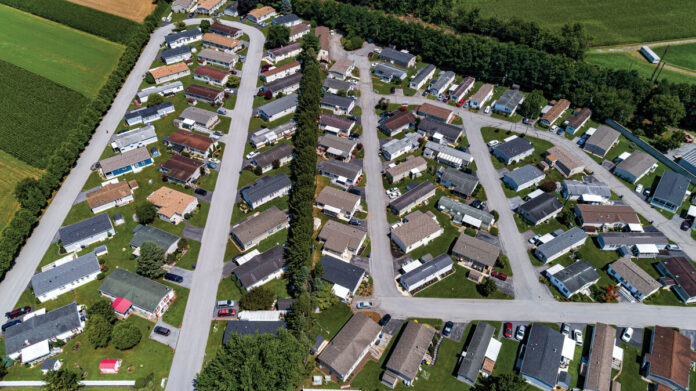Earning Ways to Get Attainable Housing in Cities Everywhere
If there is an issue everyone in the manufactured housing industry can agree is the single largest, most complex, and most critical to solve, it’s zoning.
Zoning, handled nationwide at the local level in every small government — no matter how big or small — being viewed and addressed by the lone form of housing regulated entirely out of Washington, D.C. makes for, what one could say, an “interesting spectacle.”
There are more than 330 cities across the U.S. with population above 100,000, from New York city to Davenport, Iowa. Many of the cities and surrounding rural areas the manufactured housing industry serves are closer to half the size of Davenport, like Maple Grove, Minn., Temple, Texas, or Pine Bluff, Ark. Manufactured housing communities often find themselves zoned out of cities and towns that are opposed to adding or expanding the use of manufactured housing. Sometimes draconian zoning prohibits replacing homes within communities and causes communities to lose homesites, ultimately causing a loss of affordable housing in the city or town.
So, it’s easy to see the challenge. Each of these locales has its own book of rules. And to know the rules well, and the public servants who administer them and manage projects, it’s very helpful to be on the ground. Be a business owner. Be a voter.
The likelihood of manufactured housing community operator having reliable boots on the ground in Kennewick and Oak Lawn at the same time is highly unlikely and probably unmanageable.
So what’s the solution?
There are a few remedies bounding around. One major aspect of the work on the ground nationwide is to avoid feeling overwhelmed with the need to be perfect. If one thing is certain, understanding all the local laws and helping to fix a few along the way will take time, plenty of time.
Seeding is a good idea. It’s a start, it can be comprehensive in its own way, and if the folks in Florissant, Mo., miss out perhaps their neighbors in Independence can show them the way.
The leadership at the Manufactured Housing Institute has seen and understood for some time the need for a national zoning effort. The organization has provided a playbook for professionals who want to how to approach boards and inspectors offices. In recent months, a firm paid for by a matching grant MHI received, has been attending conferences and meetings nationwide to get a better understanding of the landscape, to set parameters and do research, and to help form a more comprehensive, strategic approach to zoning.
Mind you, this is not a plan for “national zoning”. Local control is real and will remain. The effort is to understand local zoning to find ways to work within it, and to help local housing officials understand how and why the manufactured housing industry makes sense on multiple fronts.
In early 2024, this publication provided insight on another national zoning effort, called the National Zoning Atlas, that enlists academics, nonprofits, housing professionals, students, advocates, and pretty much all-comers to adopt or claim a city or town to study and feed information into the NZA website, which is a growing clearinghouse of local zoning, its efficacy, and its impediments.
The U.S. is short an estimated 3-5 million homes, depending on who you ask, and many of those much needed homes are in the window of affordability, which these days is anything less than $300,000. As a country, the nation’s average home price is likely to exceed $500,000 within the year.
And the reason those prices are so high is not because of corporate want, inflation, interest rates or any of the other market forces people in housing and in need of housing talk about so readily. All of those marks matter, but THE reason homes cost too much is because of supply and demand — there are too many people looking for a place to live amid far too few homes.
Still, the market is easing. Inflation continues to be stubborn and rates likely will stay high through the year, but consumers are coming to terms with the new cost of money, the same way business owners are settling in. As inflation recedes and rates tick down homeowners will be more ready to move, and renters will be more ready to move up. The economy will carry on. And in the years to come, with the actionable information manufactured housing community operators accumulate from Tucson to Tulsa to Taunton, Mass.,the industry will have found better ways in each place along the way to serve our customers.
MHInsider is the leader in manufactured housing news and is a product of MHVillage, the top marketplace for manufactured homes.










